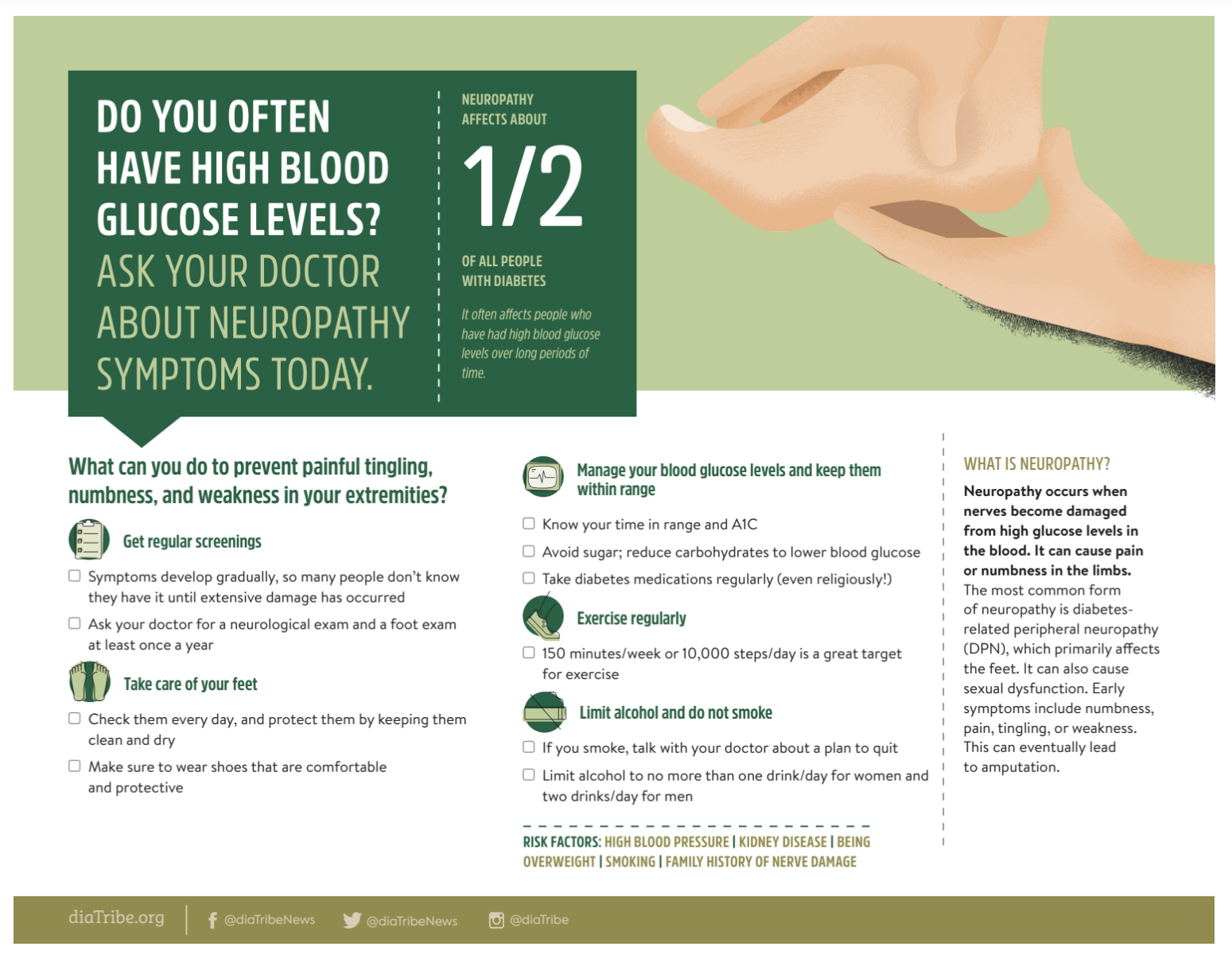Protect Your Nerves with Time in Range
By Frida Velcani
 How can you prevent or slow the progression of diabetic neuropathy with a continuous glucose monitor (CGM)? Research shows that higher Time in Range (TIR) is associated with a lower risk of nerve damage in people with diabetes.
How can you prevent or slow the progression of diabetic neuropathy with a continuous glucose monitor (CGM)? Research shows that higher Time in Range (TIR) is associated with a lower risk of nerve damage in people with diabetes.
Diabetic neuropathy is nerve damage from long-term high glucose levels (also called hyperglycemia). There are three main types of neuropathies: peripheral neuropathy, autonomic neuropathy, and focal neuropathy.
Peripheral neuropathy, or diabetic peripheral neuropathy, (DPN) may affect up to 51% of people with diabetes over their lifetime. It affects the nerves outside of the brain and spinal cord (such as those that extend to your arms, hands, legs, feet, and other body parts). DPN can lead to a wide range of symptoms or none at all. Symptoms may include pain, such as a burning sensation in the hands, arms, legs, feet, and toes. This type of neuropathy can also result in a loss of function (such as changes in sensation and reduced strength) or a loss of sensation completely. If not well-managed, DPN could lead to foot ulcers and lower limb amputations.
Autonomic neuropathy specifically affects the regulation of the autonomic nervous system, which controls your blood pressure, heart rate, digestion, and bowel and bladder function. Autonomic neuropathy can also lead to a variety of complications, including constipation and difficulty with exercise. Autonomic neuropathy can affect the nerves to your heart and blood vessels. When this causes problems in heart regulation (leading to issues with your heartbeat, a drop in blood pressure, or problems with exercising) it is called cardiovascular autonomic neuropathy (CAN).
Focal neuropathy results from issues with your nerve roots and usually happens suddenly. Focal neuropathies often involve both motor functioning – such as weakness – and sensory deficits, which can cause discomfort and pain.
Current research shows that Time in Range (TIR) is associated with DPN and CAN. This means that in addition to regular foot exams, keeping your glucose levels in the recommended ranges is key to preventing diabetic neuropathy. Even if you are diagnosed with some form of neuropathy, increasing TIR can slow the progression of the disease. Recent data highlights this relationship:
|
Study Description |
Major Results |
|
Study from 2020 including 105 people with type 2 diabetes who use insulin or sulfonylureas. Participants wore a CGM for two, six-day periods. |
|
|
Study from 2020 including 466 people with type 2 diabetes who wore a CGM for three days. Participants’ sudomotor dysfunction was measured (this is a dysfunction of the nerves that regulate your sweat). Sudomotor dysfunction can be used to detect DPN early. |
|
|
Study from 2021 including 281 people with type 2 diabetes who wore a CGM for ten days. |
|
|
Study from 2020 including 1,296 people with type 2 diabetes who used fingersticks (at least seven tests per day) to calculate TIR. |
|
|
Study from 2020 including 349 people with type 2 diabetes who wore a CGM for three days. |
|
To learn more about prevention of nerve complications, view or download our infographic on preventing neuropathy.
This article is part of a series on Time in Range.
The diaTribe Foundation, in concert with the Time in Range Coalition, is committed to helping people with diabetes and their caregivers understand time in range to maximize patient’s health. Learn more about the Time in Range Coalition here.








